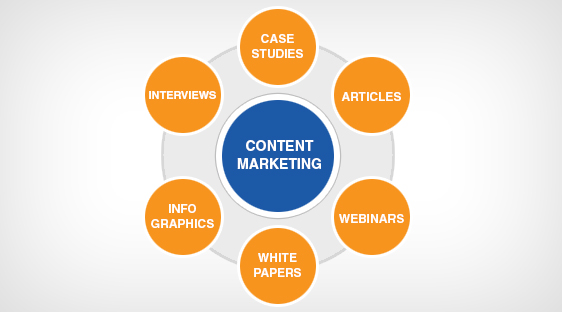
Useful content should be at the core of your marketing.
SEO Consulting Consumers have shut off the traditional world of marketing. They own a DVR to skip television advertising, online advertising often ignore magazine advertising, and now have become so adept at online "surfing" that they can take in online information without a care for banners or buttons (making them irrelevant). Smart marketers understand that traditional marketing is becoming less and less effective by the minute and that there has to be a better way.
So, if you are going to define objectives and goals closely, how should you do this? Use clear definitions that show the relationship between these terms and use examples… For digital marketing, you can define different types of performance measure as follows: Marketing goals, Marketing objectives, Marketing KPIs.
It's getting harder and harder to stand out in the inbox. Mail providers and fledgling startups are churning out new tools aimed at managing the volume of email that people receive—and subscribers are snapping them up. Meanwhile, the email industry continues to beat the relevance drum, pounding it into our heads that we need to be relevant to our audience, that sending relevant emails is the only way to rise above the noise, that relevant content is the golden ticket to email marketing success. But what, exactly, does it mean to be relevant? How can you tell if your content—and your emails—have relevance to your audience?
First, choose a rough ratio for your post types. Your ideal balance may vary depending on what industry you're in, but a good place to start is 50 percent newsworthy content, 35 percent evergreen content, and 15 percent personal content. You don't have to adhere to your target ratio religiously, but having a rough idea of how many articles you'll need from each content category will help you to ensure that your posts are always valuable and interesting to your readers.
Using analytic tools, we track user engagement, social sharing, readability, content performance& conversions -both for PCs & mobile device users. Not just this, we also perform in-depth content analytics customized to your business needs & optimize the content strategy accordingly.
Content strategy focuses on the planning, creation, delivery, and governance of content. Content not only includes the words on the page but also the images and multimedia that are used. Ensuring that you have useful and usable content that is well structured and easily found is vital to improving the user experience of a website.
It's a cute analogy, but it's simply not accurate. It's not as if SEO and content marketing are two different people. To borrow the same metaphor, SEO and content marketing are actually two personalities of the same person. The problem, then, lies in the disconnect between SEO and content marketing. It's time to bring the two back together. This is the only way you'll be successful in both your SEO and your content marketing.
It's important to tap social media platforms in order to share your content & popularize it by outreaching to the desired audience. We also integrate social strategy into our content marketing campaigns to help businesses plan social media activities around the content strategy.
Social media makes content marketing easy. Rather than doing all the work yourself, your readers and audience members do the work for you by constantly sharing your content with their audience via social media – for free! Or, so you may think, but it doesn't always work like that. It could be because your content isn't very social media friendly. Depending on how you look at it, social media can be a blessing or a curse. Sure, it is a great low-cost channel for spreading your content, but it can also be a crippling scapegoat if you aren't careful. You could but be publishing on social media regularly with little return on your investment, all with the appearance of doing "great content marketing."